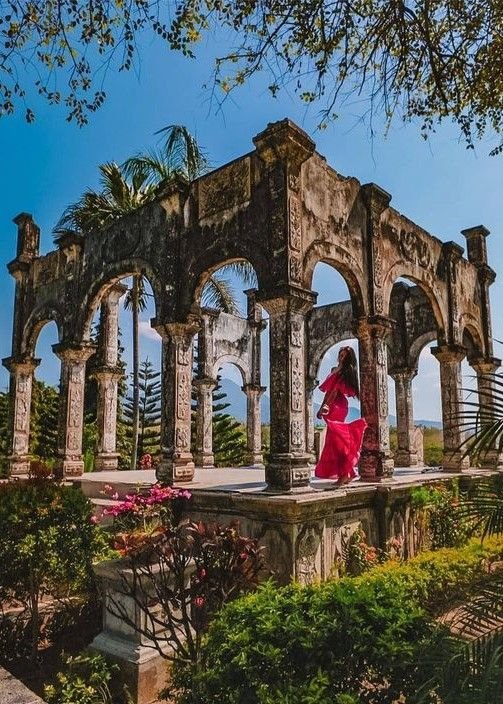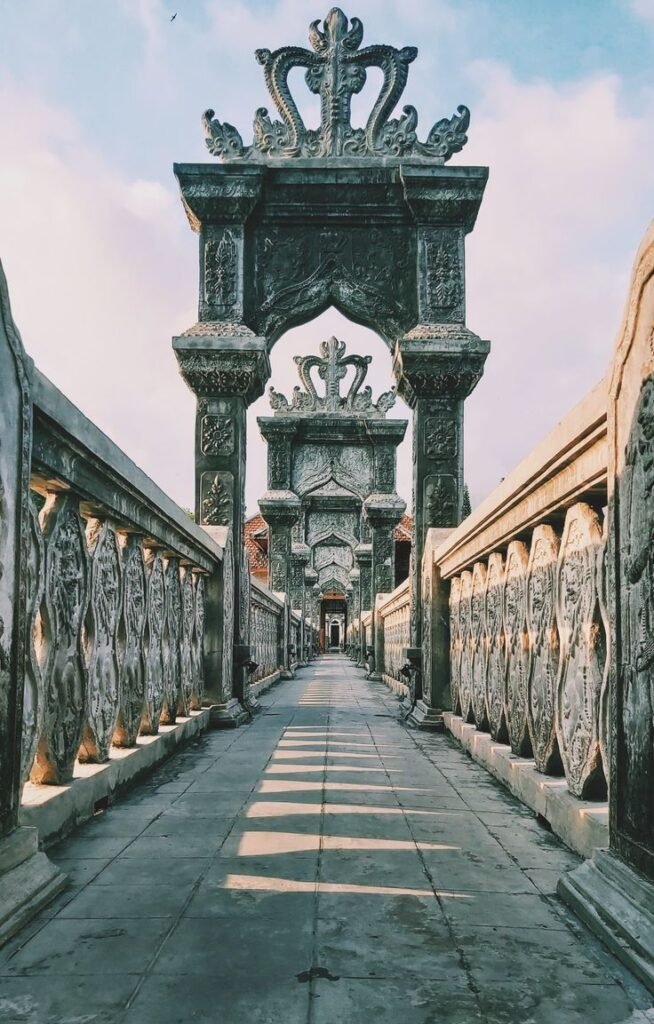Taman Ujung Water Palace
Taman Ujung Water Palace, also known as Taman Sukasada, is a captivating historical site located in the Karangasem Regency of East Bali. Built by the last King of Karangasem, Anak Agung Anglurah Ketut Karangasem, starting around 1909 and completed in 1921, it served as a royal retreat and a place to welcome important guests. In the Dutch East Indies era, it was known as Waterpaleis, meaning “water palace.”
The architecture and layout of Taman Ujung are unique, showcasing a fascinating blend of Balinese and European styles, with hints of Chinese influence. This architectural fusion reflects the king’s open-mindedness and his desire to incorporate different cultural elements. The complex is set around three large ponds connected by elegant bridges and pathways, creating a serene and picturesque environment.
Key features of Taman Ujung include:
- Three Main Ponds: These interconnected pools are central to the palace’s design. Stepping stones allow visitors to stroll across the water, offering close views of the fish and the surrounding structures.
- Bale Gili (Floating Pavilion): Situated in the middle of the northern pond and connected by two bridges, this was a primary resting place for the king and offers scenic views.
- Bale Kapal (Ship Pavilion): Located on higher ground at the western edge, this structure resembles a ship’s hull and provides panoramic vistas of the entire complex, the coastline, and even Mount Lempuyang in the distance.
- Ruins and Remnants: Parts of the palace were damaged by the eruption of Mount Agung in 1963 and an earthquake in 1975. The remaining structures and ruins add a historical and somewhat romantic touch to the site, becoming popular spots for photography.
- Lush Gardens: The palace grounds are adorned with well-maintained gardens, featuring colorful flowers and various trees, enhancing the tranquility and beauty of the area.
- Pura Manikan: A temple with a holy spring is located within the park, adding a spiritual dimension to the site.
Originally, the complex covered a vast area of around 400 hectares, but much of the land was distributed to the local community during land reforms. Today, approximately 10 hectares remain, open to the public as a popular tourist attraction. Taman Ujung offers a peaceful escape with its beautiful water features, unique architecture, and historical significance, providing a glimpse into Bali’s royal past.










